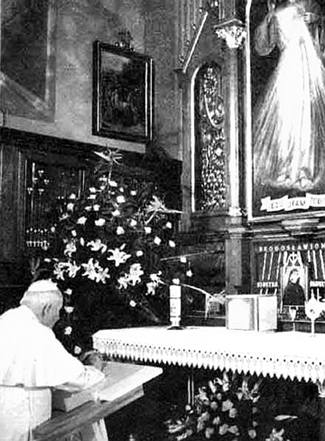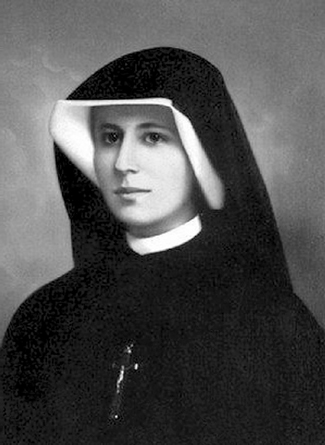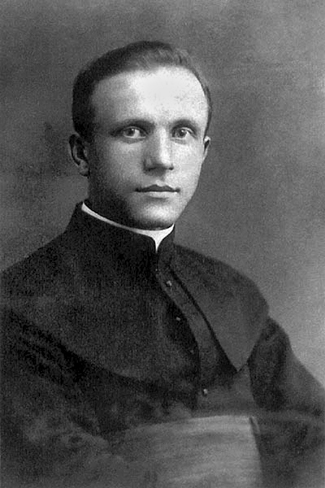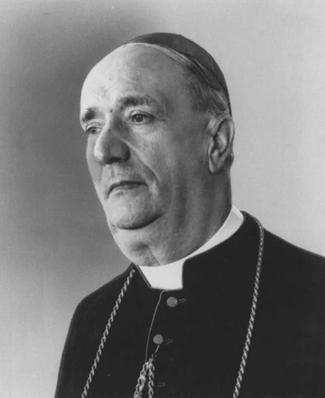The Divine Mercy Devotion: Why Did the Holy Office Ban It?

The original decree of the Holy Office banning the Divine Mercy devotion was reversed by the Vatican in 1978, due in no small measure to the efforts of Karol Wojtyla, the future John Paul II, who became an ardent promoter of the apparitions.
by Rev. Fr. Benedict Hughes, CMRI
(Originally published in The Reign of Mary, No. 151, Summer 2013)
In a past issue of The Reign of Mary, we published an article on false devotions (issue #128). That article can also be read on our web site (https://cmri.org/articles-on-the-traditional-catholic-faith/false-devotions-dangers-for-pious-souls/). The point of the article was to explain the teachings of the Church on new devotions — teachings which caution against any superstition or novelty. Specifically, the famous decree of the Holy Office on the subject lamented the fact that “new forms of worship and devotion, often enough ridiculous, usually useless imitations or corruptions of similar ones which are already legitimately established, are in many places, especially in these recent days, being daily multiplied and propagated among the faithful, giving occasion to great astonishment and to bitter aspersion on the part of non-Catholics” (Holy Office, May 26, 1937; AAS 29-304).
In this excerpt, we can see that, in addition to rejecting new forms of devotion which are doctrinally questionable, there is grave concern about those which are “useless imitations or corruptions” of similar ones which have already been approved. Based on this reasoning, the Holy Office during the reigns of Pope Pius XI and Pope Pius XII forbade various new devotions, for example: devotion to the Sacred Head of Our Lord, devotion to the Annihilated Love of Jesus, the Rosary of the Most Sacred Wounds of Our Lord, devotion to the Merciful Love of Jesus, etc. Likely you have never heard of these new devotions, for the very reason that they were suppressed by the Church.
This then leads us to the question of the devotion called “the Divine Mercy.” This devotion is based on the purported revelations to Sr. Faustina Kowalska, who lived in the early 20th century in Cracow, Poland.
In a decree of the Holy Office dated March 6, 1959, we read the following: “The Supreme Sacred Congregation of the Holy Office, having examined the alleged visions and revelations of Sister Faustina Kowalska of the Institute of Our Lady of Mercy, who died in 1938 near Cracow, has decreed as follows: The distribution of pictures and writings which present the devotion to the Divine Mercy in the forms proposed by this Sister Faustina, should be forbidden…” (AAS 51-271). Incidentally, the decree was signed by Msgr. Hugh O’Flaherty as Notary of the Holy Office. He is the same monsignor portrayed in the movie “The Scarlet and the Black,” which tells the true story of his efforts to save more than 6,500 allied soldiers and Jews during the Nazi occupation in Rome during World War II. After the war he received numerous awards, including the U.S. Medal of Freedom. Msgr. O’Flaherty died in 1963.
Some may object to the acceptance of this decree of the Holy Office on the grounds that it was issued in 1959, during the time that the notorious modernist John XXIII was “pope.” But we do not believe this fact obscures the reality that those who worked in the Holy Office in those days before Vatican II, such as Cardinal Ottaviani, were well-trained and entirely orthodox prelates and theologians, who had been appointed by Pope Pius XII. (Similarly, we can quote from the decree of the Holy Office in 1962 against the writing of Teilhard de Chardin.) Eventually, this decree of 1959 rejecting the writings and devotion promoted by Sr. Faustina was reversed in April, 1978, due primarily to the efforts of the bishop of Cracow, Karol Wojtyla, who would be elected by the cardinals and become John Paul II some 6 months later.

The Divine Mercy devotion is based on the purported revelations made to Sr. Faustina Kowalska, a nun in a convent of the Congregation of Sisters of Our Lady of Mercy in Cracow, Poland during the 1930’s.
Who Was Sister Faustina?
Born in 1905 in central Poland, Helena Kowalska was the 3rd of 10 children. Her desire to become a religious finally became a reality in 1925, as she entered the Congregation of Sisters of Our Lady of Mercy. Soon she began to experience the purported visions, during one of which, in 1931, she was instructed to have an image of Our Lord painted. You have likely seen this image, which is now everywhere to be found in Novus Ordo bookstores and religious goods shops. The image depicts Our Lord with rays of red and white light coming forth from His heart.
In 1933 she was transferred to a convent of the order in Vilnius. There she met a priest named Fr. Michael Sopocko, who became her spiritual director and an ardent proponent of her visions. He helped her to obtain the services of an artist and have the image painted, although she was not pleased with the result. There is some controversy over this, as the original painting is not now promoted. It has also been said that Fr. Sopocko vehemently opposed the propagation of any but the original painting.
Sr. Faustina died in a convent near Cracow on October 5, 1938. As we have stated above, the original decree banning this devotion in 1959 was reversed by the Vatican in 1978, due in no small measure to the efforts of the then-bishop of Cracow, Karol Wojtyla. He became an ardent promoter of the apparitions. In 1965 he commissioned a theologian, Prof. Ignacy Rózycki, to examine Sr. Faustina’s writings. In the same year Cardinal Wojtyla opened the informative process on her life, which is the beginning of the process toward eventual canonization. Eventually, as John Paul II, he proclaimed her a saint on April 30, 2000.
Why did the Church reject this Devotion?
One naturally wonders why the Church rejected this devotion. We do not know for certain the reasons behind the 1959 decision of the Holy Office, but we can cite several potential problems with the devotion.
There are theological problems with the messages. One reason for concern can be found in the wording of the messages. In 1934, Sr. Faustina began a diary in which she recounted her mystical experiences. Apparently, there were things in this diary that were theologically questionable. Modern defenders of the devotion attribute the problem to a faulty translation of the messages from the original Polish into Italian, for it was the Italian translation that was examined by theologians of the Holy Office.
That argument, however, seems implausible.
If we look at the messages, we see that according to Sr. Faustina, Our Lord promises that those who go to confession and communion on the Sunday following Easter Sunday will obtain the remission of the guilt and the punishment of their sins: “On that day the very depths of My tender mercy are open. I pour out a whole ocean of graces upon those souls who approach the fount of My mercy. The soul that will go to Confession and receive Holy Communion shall obtain complete forgiveness of sins and punishment. On that day all the divine floodgates through which grace flows are opened” (Diary of Sr. Faustina, 699).

Fr. Michael Sopocko, Sr. Faustina’s spiritual director, became an ardent proponent of her visions. Not only did he hire the services of an artist to have the image painted, but he himself posed for it, dressed in alb in cincture.
In an article in the National Catholic Reporter of August 30, 2002, the author (John L. Allen, Jr.), referred to the near 20-year ban (from the 1959 decree until the 1978 decree which reversed it) and admitted that there were theological problems with the message: “Officially, the 20-year ban is now attributed to misunderstandings created by a faulty Italian translation of the Diary, but in fact there were serious theological reservations — Faustina’s claim that Jesus had promised a complete remission of sin for certain devotional acts that only the sacraments can offer, for example, or what Vatican evaluators felt to be an excessive focus on Faustina herself (http://tinyurl.com/ncr-online-sr-faustina).
If we examine the authentic promises of the Sacred Heart, we do not find a similar wording, to the effect that all temporal punishment will be remitted for confession and Holy Communion received on a particular day. Of course, our Divine Lord could do just that if He so willed, but the problem is that this promise omits to mention the need for contrition and amendment of life.
Another theological novelty can be found in the writings of Canon Ignacy Rozycki, who had been appointed by Karol Wojtyla to examine the diary of Sr. Faustina. In his enthusiasm, he proclaims this devotion a “second baptism.” In other words, he is endorsing the same idea that on the feast of Divine Mercy one can obtain a complete remission of sins and all punishment due to them, just by performing devotional acts and receiving the sacraments of Penance and the Holy Eucharist. But the terminology of a “second baptism” has always been used by the Church to refer only to the profession of perpetual vows in a religious institute approved by the Church.
Another potential reason for concern can be found in the image of Divine Mercy. As mentioned above, this picture is of Our Lord with His left hand at His heart, the other being elevated toward the viewer. From the Sacred Heart there emanate rays of white (signifying grace) and red (signifying the Blood of redemption). One objection is that the Sacred Heart itself is not seen. The rays emanate from Our Lord’s breast, but without picturing clearly His heart. Another problem is that with many of these images — indeed with the original picture — there are no wounds in Our Lord’s hands and feet, or they are so faint as to be not clearly visible. But we know from Sacred Scripture that Our Lord retained these wounds after His resurrection.
The image we are accustomed to seeing does have wounds that are faintly visible, but it is not the original; it is the work of an artist by the name of Adolf Hyla whose rendition became popular. His work, however, was vigorously rejected by Fr. Sopocka who worked with Sr. Faustina to have the original image painted by the artist Eugene Kazimirowski. Was part of the reason for Fr. Sopocka’s opposition to the Hyla painting the fact that he had posed for the image of Our Lord, dressed in alb and cincture? Be that as it may, the original image does not show the wounds in Our Lord’s hand, feet or side. Pope Pius XII commented on this omission in the case of crucifixes. After lamenting the errors of modern authors who wish to remove attention from the Passion of Christ and instead focus only on the glorified Christ, he states: they “have gone so far as to want to remove from the Churches images of the Divine Redeemer suffering on the cross” (Mediator Dei, 1947, par. 162). I believe these defects in the image (omission of the Sacred Heart and the wounds) are another reason for the suppression of the devotion.

Cardinal Ottaviani was the head of the Holy Office in 1959 when it issued the notification forbidding the distribution of “images and writings that promote devotion to Divine Mercy in the forms proposed by Sister Faustina.”
A third reason, can be found in the wording of the 1937 decree of the Holy Office, warning against devotions which are “useless imitations or corruptions of similar ones which are already legitimately established.” Of course, the devotion to the Sacred Heart immediately comes to mind. Does not devotion to the Sacred Heart emphasize the infinite mercy of our Divine Redeemer? Why then is there a need for another devotion to focus on the divine mercy? Would that not merely serve to take attention away from devotion to the Sacred Heart?
Let us also call to mind how insistently the devotion to the Sacred Heart of Jesus has been promoted by Holy Mother Church. The first Office and Mass to honor the Sacred Heart were written by St. John Eudes in the 17th century. In 1856 Pope Pius IX extended the feast to the entire Church. Pope Leo XIII consecrated the entire human race to the Sacred Heart in 1899, calling it the most important act of his pontificate. Pope Pius XI raised the feast of the Sacred Heart to a double of the first class — the highest rank possible. Pope Pius XII devoted an entire encyclical to this devotion (Haurietis Aquas, published in 1956). Everywhere in the Church there are devotions to the Sacred Heart, First Friday observances, etc. So another devotion to Our Lord, centering entirely on His mercy, would only seem to take attention away from a devotion, already universally recognized and observed, which centers on His love and mercy. Thus it appears to be an unnecessary repetition — a “useless imitation,” to quote the words of the decree.
We may never know for sure the exact reasoning of the consultors of the Holy Office for rejecting this devotion. It could have been for one, two, or all three of the reasons we have given, as well as others unknown to us. Be that as it may, the fact is that the devotion to the Divine Mercy, after having been suppressed by the Holy Office in 1959, is now widely promoted in the Conciliar Church, whereas the solid and divinely-willed devotion to the Sacred Heart is all but forgotten.
Let us then be cautious of new, unapproved devotions. Remove the image of Divine Mercy from your homes, if you have it displayed, and use, rather, the image of the Sacred Heart. Do not pray the chaplet of Divine Mercy or other devotions honoring this particular title. Instead pray the litany of the Sacred Heart of Jesus and other devotions to the Sacred Heart. Finally, be sure to often read and meditate on the Promises of the Sacred Heart of Jesus, for therein you will find all you need to understand the infinite love and mercy of Jesus.
